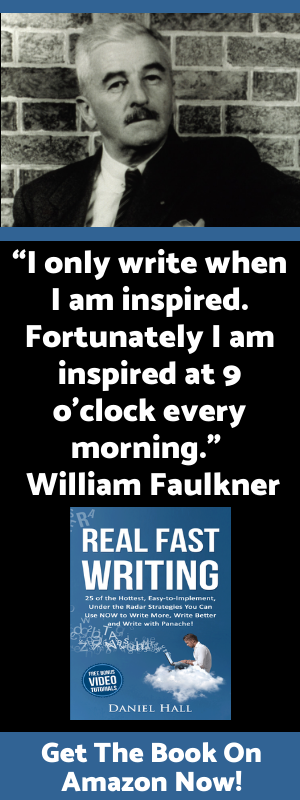Publishing And Profiting From Public Domain Content With Tony Laidig

Tony Laidig teaches how to profit from public domain content.
Welcome Tony Laidig! Tony Laidig began his professional career as a newspaper photographer. Tony’s career has expanded enormously over the years. Today, as an entrepreneur, Tony is a successful speaker, business coach, media expert, and photographer.
Tony and I have been friends for several years. And, our first product we did together was on the Public Domain. Tony is definitely an expert in the Public Domain. He has been working with this content since 1985.
In this podcast Tony is going to talk about what the Public Domain is and how to use it to publish quality content quickly.
What is the Public Domain?
The Public Domain is where you can get free usable content.
Essentially what public domain content is:
- content on which the copyright has expired
- or content that never qualified for copyright
The Public Domain can encompass everything from books and magazines, to images, posters, movies, you name it. Every kind of media that’s known to man. Government websites can potentially fall into that realm of public domain–provided that the copyright has expired. In the U.S., this usually means pre-1923, or pre-1964, if the copyright wasn’t renewed, or if it never qualified for copyright protection. Content produced by government employees doesn’t qualify for copyright protection, because the employees are paid using our tax dollars.
What’s so exciting about this content is that there’s a lot of it … To the tune of 85 million books, and several hundred thousand magazines, and 8.5 millions patents, and on and on it goes. You can use this public domain content, for free, without asking anyone’s permission or paying anyone any royalties.
 How To Quickly Publish An E-Book By Using the Public Domain
How To Quickly Publish An E-Book By Using the Public Domain
Amazon has rules about using Public Domain material. Amazon is very picky about authors who publish public domain content. As a matter of fact, if there are any books that are already available online, that are in the public domain, Amazon will not allow you to publish those without adding a lot of additional value, in creating a new version.
However, Tony has a method that he uses to completely sidestep that issue altogether, but still draw from the Public Domain, and that is to use magazines. There are hundreds of thousands of magazines that are in public domain; as a matter of fact, 99.4% of all the magazines that were published before 1964 are in the public domain. That’s a lot of magazines.
Tony recommends using magazines because the content is nice, short, succinct articles.
Here is Tony’s example on how you can use Public Domain magazines to write an e-book:
- I want to find related articles … Let’s say that I want articles on how to photograph children. Granted, these articles may come from the 1940’s or 1950’s, or early 1960’s, but I would like to challenge you to consider that photographing a child in 1950 is pretty much the same process as today.
- I will look for maybe ten, twelve articles all related around a similar topic. I will scan those quick, convert them into editable text using Adobe acrobat, or any OCR software. There are a lot of free options available, PDFOCR is one.
- Then, I’ll do a light edit on that text, depending on antiquated terminology, or whatever. I will also, in the case that I approach with photography, include some of my own photo examples. You don’t have to use images, but I love using images because, as they say, a picture is worth a thousand words, right? The more images you have in the book, the less words you need.
- Now, think about this … You have, say, ten or twelve articles. Each of those articles, the title of that article, becomes a chapter title. The article becomes the chapter. You’re literally taking magazine articles, using those to assemble your e-book, or even a print book, for that matter, just by using themed articles. Then you can title the book whatever you want.
- I always recommend adding value. Your own insight, or wisdom. In other words, don’t just go out and randomly pick something that you know nothing about.
How To Find Public Domain Magazine Content
The primary place Tony recommends to find Public Domain magazine content is eBay.
Do a search for a topic like, photography, gardening, crafts, basket-making and the word “magazine.” EBay is ever-so-kind as to show back issues of magazines, organized by date. They actually make it easy to identify the certain requirements that you have.
You can also go to antique places and used bookstores. I’ve certainly found the same kinds of magazines in those places. However, eBay is faster.
Making Sure Your Content Is Considered Public Domain
As far as qualifying whether or not the content is in the public domain, you want to start with The University of Pennsylvania. The University of Pennsylvania. has their copyright section on their website, which makes it very easy. If you do a search for UPenn and copyright, it will take you right there. They have all of the copyright catalogs listed there. It’s just simply a matter of looking up the magazine listing, or the magazine title, in the appropriate year. If it’s 1955, “Popular Photography,” you go to the 1955 catalog for periodicals . Which is what they call it, not magazines, periodicals. Scan down through to the “P’s”, and check for “Popular Photography.” If what you’re searching for is NOT there, then you can use it. If the magazine you’re searching for IS there, then it is copyrighted and you can’t use it.

Daniel’s Real Fast Results Tips: Using The Public Domain
- You could use content like this to make freebies to generate leads for your e-mail list.
- You can use it to sell directly from your own website, if you wish.
- You could make a Kindle book out of this content, and sell it that way.
- You could upload it to Barnes and Noble Nook, and on, and on, and on.
This is super-exciting stuff, and you should definitely be looking at using public domain to augment your content anywhere.
Resources
PDFOCR – http://www.pdfocr.net/
eBay – http://www.ebay.com/
University of Pennslyvania – Copyright Catalog – http://onlinebooks.library.upenn.edu/cce/
Expert Media Show – http://expertmediashow.com/
Real Fast Public Domain – http://realfastpublicdomain.com/
Real Fast Derivative Products – http://realfastderivativeproducts.com/
Click Here To Order!
Filed in: Cool Tools • Digital Publishing • ebooks • Info-Product Creation • Podcast • Public Domain
About the Author (Author Profile)
Daniel Hall is a bestselling author, speaker, publisher, nurse, attorney and host the Real Fast Results podcast. He is also the creator of other highly popular “Real Fast” brand of training products. He left law practice 10 years ago to build his publishing business and has never looked back. Daniel is a true serial entrepreneur and his list of URLs is longer than a piece of paper, so you can check out Daniel’s hub at www.DanielHallPresents.com or the podcast right here on this site!Comments (5)
Trackback URL | Comments RSS Feed
Sites That Link to this Post
- How To Create Evergreen Products With Marlon Sanders | Real Fast Results | June 20, 2016
- Publicity Tips–The Public Domain Goldmine | January 24, 2017









You partially answered some questions I had in your post on using public domain magazine articles for content in writing an ebook – Thanks, as I’ve been searching for specific info about how to write my book as far as, will it be considered public domain, a derivative work, or my own?
But I still have a question – I have a public domain journal on education from the 1800s that i found on Google books, it is very long, over 400 pages, with many articles from many different authors. I do not want to use all of it, of course, and I want to change the words and photos to bring it up to date. Would it still be considered public domain if I change it that drastically? Or, if I used some of the articles as more of an idea, like, “this is how they did things in the old days”, or if one of the original articles was teaching children to cook, I could use that idea but write my own words about it? And, if I published it as public domain, I’m concerned that my changes would not be in line with the original author, so wouldn’t there be a legal issue for publishing as public domain when changing what original author wrote? It seems to me it is like “lying” or not accurstely depicting what original author wrote. Or, would I have to make a note for every single change I made, which would turn it into a mess?
Please let me know what you think about this, and your opinion on how drastically I would have to change it to publish as my own, and how accurate I would have to be to publish as public domain, for instance, on Amazon. I have read Amazon’s policy several times, but still csnnot figure this out, it’s driving me nuts!
Thank You very much,
from Anna Plummer
Another question for you – In this post, you explained how to gather magazine articles on thd same subject, rewrite, add photos, etc., to create an ebook. Can that ebook be sold on Amazon Kindle as your own work, or does it have to be listed as public domain? I have read the Amazon guidelines, researched their forum, and I still cannot figure out the answer. It’s not like you would be differentiating a public domain book, as the new book would have pd info from many sources – or would you hzve to just cite / annotate each source?
I have the same question about writing your own content, but using public domain images – If I were to publish an dbook on Kindle, will the form ask me for copyright info for each image?
Thank You very much, I appreciate your articles.
It’s going to be finish of mine day, but before
end I am reading this wonderful post to improve my knowledge.